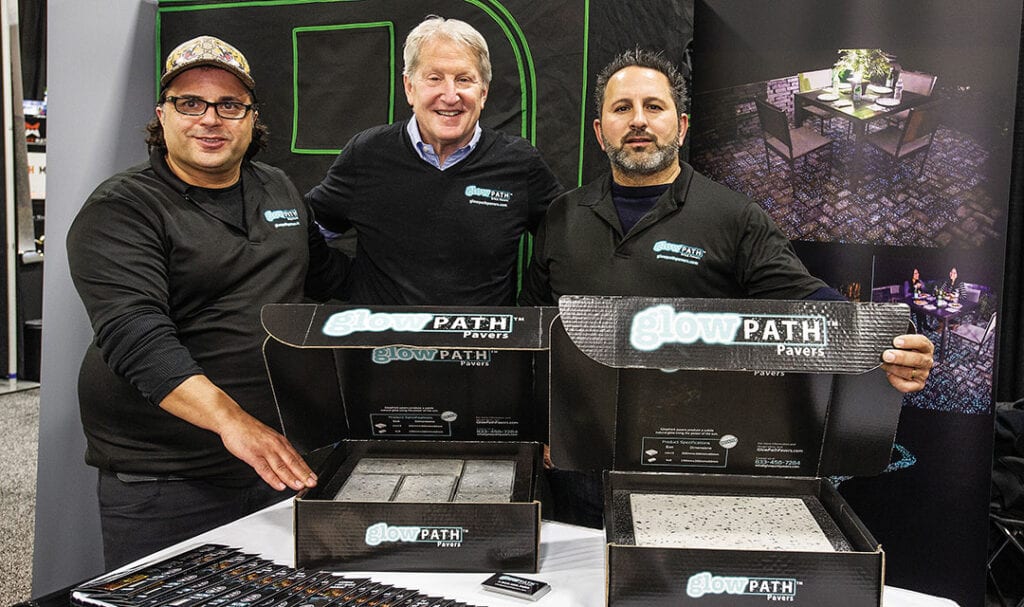A Business That Shines | The Jewish News | 3.11.2020

The Glow Path Paver story
The genesis of Glow Path was created during a conversation between Alex Toma and Jeremy Eckhous about a new patio deck. Jeremy had some new “glow in the dark” material that he was experimenting with. Alex took one look at some of the things Jeremy had developed and immediately knew there were numerous applications in the hardscape and paving industry. He invited his brother, John, into the conversation, and Glow Path was born.
That first encounter a decade ago sparked the development of a business partnership. But it didn’t exactly progress at lightspeed. “For seven or eight years we’d meet every couple of months to brainstorm applications, develop prototypes and research competitors,” Eckhous recalls.
During that time, they not only fashioned product concepts, but also a genuine relationship.“We didn’t really activate any of the ideas,” he continues, “but we did generate a close friendship.”
In 2015, the trio patented a process for creating a concrete block speckled with chips that absorb the sun’s ultraviolet rays and give off a blue, green or aqua hue at night. But only in the last half-year or so has business begun in earnest.
In that time, Glow Path has finalized a contract with a manufacturer in Southern California, showcased at the World of Concrete fair in Las Vegas and booked dozens of orders. Now they are going to market.
“We’re talking to big box stores — Menard’s, Home Depot, Lowe’s,” Alex Toma says. “And we’re working with landscape architects to get them to specify our materials with their clients.”. They are now targeting customers in California, Arizona and Nevada.
The owners envision several possible uses for their products. One is to illuminate public spaces. “City plazas, parks, amusement parks, retirement communities, college campuses, Las Vegas casinos and hospitals are perfect examples of potential clients,” Eckhous says. “It’s a unique product and serves in many ways as an alternative to low-voltage lighting.”
No electricity is needed, and because the material is non-toxic, it’s environmentally friendly. “Theoretically, you could eat it,” said Eckhous.
The luminous stones could also, the owners say, help people navigate treated sidewalks, curbs or steps. There are marine applications, too: swimming pools, fish tanks, and koi ponds. “We may also eventually provide other sizes for accents and borders, and designs like arrows.”
Alex adds, “The good part about all this is it’s going to be here for a long, long time, even after we leave this world. It’s going to be here and people are going to see the effect we’ve made on the world — that we’ve made the surface glow.”